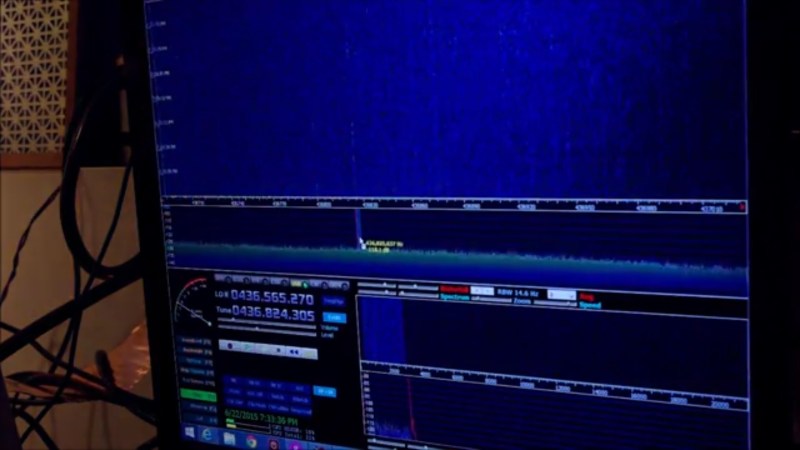[Bill Meara] has discovered an easy way to listen to amateur “cube-sat” satellites using a cheap SDR Dongle.
The DVB-T SDR Dongle comes in at a whopping thirteen bucks, and the highly sophisticated antenna (pdf) is made from a bit of copper wire and uses aluminum wire for the ground plane.
Once he had everything hooked up, [Bill] went to the Heavens Above website to see when satellites would be passing over him. He was able to lock onto the Prism Satellite, and then a couple other cube-sats that were launched from Russia and Istanbul.
While listening to the Japanese FO-29 satellite at 470 MHz, the Doppler Shift was noticeable ,verifying that he was indeed tuned in to a device in low Earth orbit. Be sure to check out his blog for more details, not to mention the video below where you can hear the Doppler Shift for yourself.
















It would be cool to see this used for something like the Lightsail Kickstarter. With multiple people around the globe listening, routing information through the Internet, Lightsail could have gotten data much more of the time. Of course, developing the infrastructure to do so will take engineering time from the Lightsail team, so it’s not that easy. However, the Lightsail team seems interested in using the engagement of the community to their advantage. Hopefully with cheap access to this type of hardware, crowd-funded space projects can form their own worldwide listening stations.
Never saw lightsail – COOOL.
Nice writeup. People have been doing this for years now with the RTL2832U DVB sticks. You can get custom ones such as the http://www.funcubedongle.com/ which have better filtering.
Test comment, since I don’t seem to be getting update emails. Please delete ;-)
Consider it deleted.
Should we consider both of these deleted?
Yes. But don’t delete this one.
Meh, you’re all deleted!!! Now get off my lawn!
…dammit, who deleted my lawn????????
Sigh. Still not getting update emails. Trying a different email address this time.
I’d like to keep it for future reference.
Lindsay Wilson you probably
1. unchecked or left notify by email option.
2. your email is blocking thinking it is spam.
3. getting buried in the other emails.
Amateur satellite stuff is seriously next level. Talk about awesome!
Im still gathering parts, but will soon do something similar and map the 21cm hydrogen line at the galactic center.
I understand that the SO239 connectors are lousy for higher frequencies, and yet people have very similar designs like this for high frequency antennas like ADS-B antennas.
So don’t do it guys, use an F-connector or something to make an antenna like this (with appropiate dimensions of course) if it’s for higher frequencies.
It’s generally so that for higher frequencies you use different cables and connectors than for mid and low range ones. One of the reasons being the so called skin effect, which is a very real consideration and changes things considerably, both for the transference of the signal as well as the interference the signal might pick up.
N connectors work well also.
Additional comment: There are plugins for SDRsharp to follow through the Doppler shift if I recall correctly.. Because it’s a bit annoying to try to do that by hand obviously.